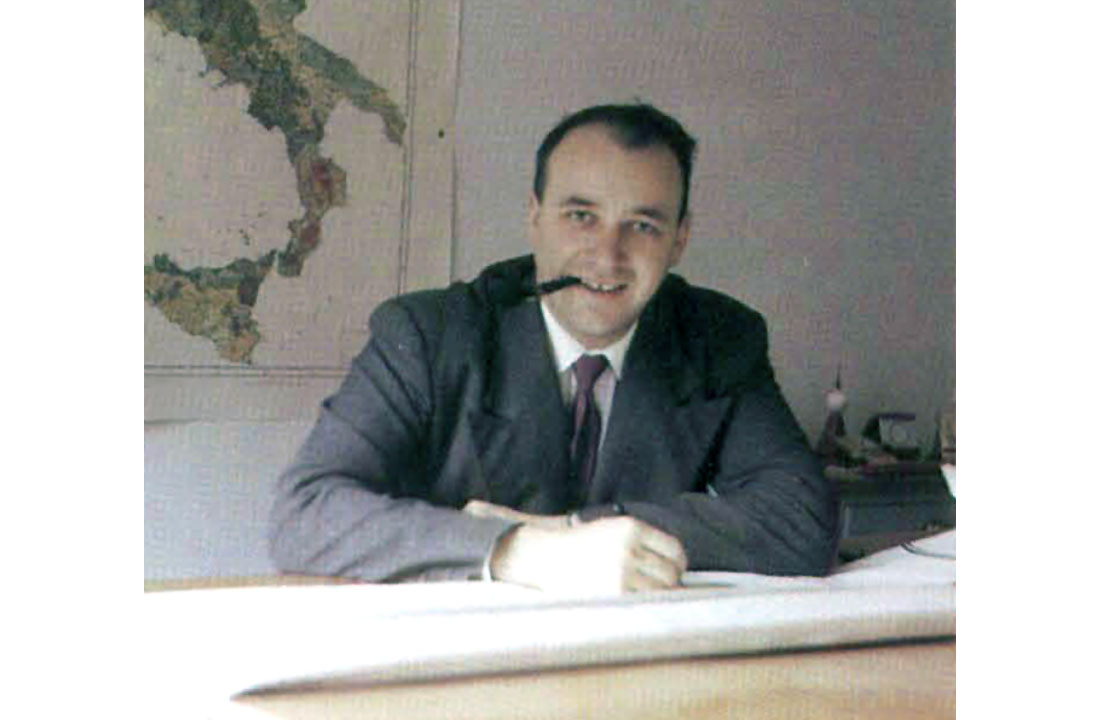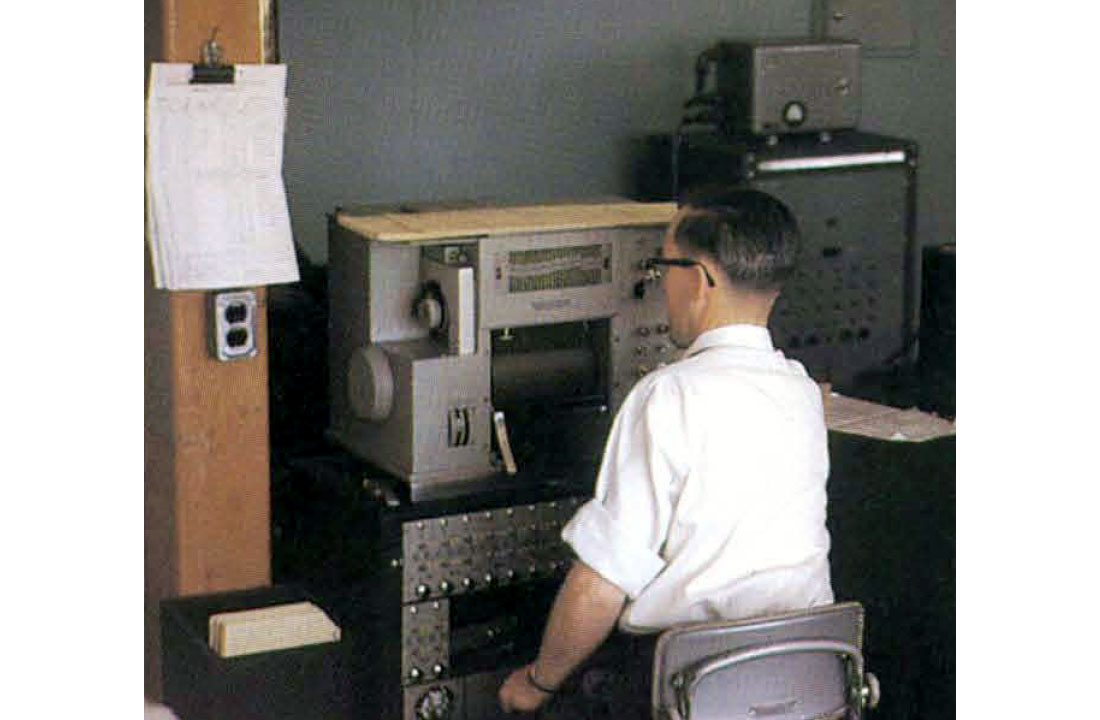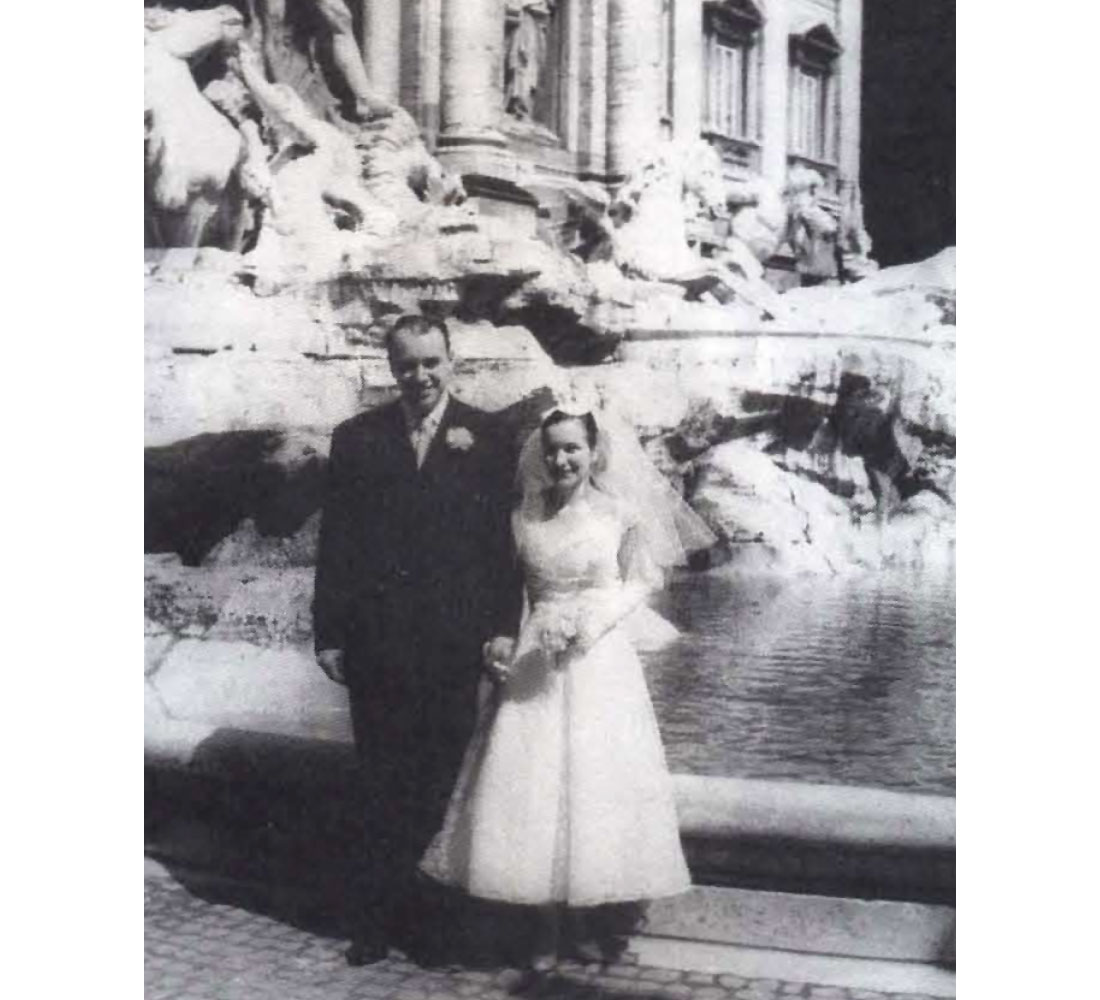When George Kostashuk looks back over his life, he kind of shakes his head in awe that things turned out so well. "I do believe that somebody from above is kind of watching over us," he says with a smile on his face.
The youngest of six children, Kostashuk was born on May 11, 1927, to a feed mill operator and his wife in Vegreville, Alberta. What sticks out in Kostashuk's mind about growing up in this rural community of 2,000 persons, was that there were about 14 churches amongst a very diverse ethnic community. He shakes his head in bewilderment as to why the world today is under so much turmoil. "Back then, everybody got a long. You didn't think about a person, what religion he was. It still shocks me in this day and age that people don't get along. People don't believe me when I tell them that it doesn't make any difference."

Where today's Vegreville Fair Grounds are, was once Kostashuk's pasture, a rented parcel of land where the family kept some dairy cows. Milking the animals was part of the young Kostashuks daily routine. Despite growing up in the Depression, Kostashuk didn't feel he missed out on anything. There was always food on the dinner table and people in Vegreville helped each other out. It was during high school that Kostashuk developed a passion for mathematics and sciences, because they were so easy. During the summer, he worked for Canadian Utilities, "Once, I knocked down a power pole. That put the power out for half an hour. "
In 1945, the family moved to Edmonton and Kostashuk enrolled at the University of Alberta to study honours physics, " I aspired to be a research guy." He also worked part-time for the mathematics department marking papers. His summers were spent working for the Canadian Defence Research Board at Suffield in southern Alberta. Assigned to their physics and meteorology department, Kostashuk recalls one attempt on being a rainmaker, "We're up 22,000 feet from the ground, dropping dry ice down through the clouds, hoping to make rain. But it was so dry there that by the time the rain had got to the ground, the rain had evaporated and we still hadn't made any rain. "
After graduating from university in 1949, Kostashuk looked to the United States for work. While waiting to get his immigration papers, he checked out the Calgary oil patch and went to work for Western Geophysical instead. A year later, he took a leave of absence to study geophysics at the University of British Columbia, "I saw how fast the oil industry was growing and I thought to myself, hey, I should just get shoved in and let the current take me around."
The first western crew that Kostashuk ever worked on, really impressed him, "The people who got into the oil industry early were the type that eventually went out on their own." The late Les Vye had his own consulting firm. Johnnie Hantho became a medical doctor, and the late Ernie Creesy became a financial analyst at Mobil. Mike Hanson and Art Kokowski ran their seismic drilling company. The late Hal Goodwin ran a geophysical company and ended up fostering international relations between Canada and China.

The observer was B.J. Seaman. "We used to have to beat him (Seaman) up in the afternoon, so we could go home early," gripes Kostashuk.
By 1951, Kostashuk had worked his way at Western Geophysical Company from junior observer to party chief. He then went to work for Triad Oil Company (which was basically owned by British Petroleum) as a senior geophysicist for Dr. T.C. Richards. A year later, Kostashuk received a call from the late Henry Salvatori, the Los Angeles-based owner of Western Geophysical, to go work for them in Italy. He politely refused. But Salvatori insisted on flying Kostashuk down to Los Angeles for a little trip and there would be no hard feelings, even if he didn't want the job. After being chauffeured in a the boss' big Cadillac and given the red carpet treatment, Kostashuk returned back to Calgary and asked his British-born peers at Triad what to do, "They told me that I was too darned provincial and that I needed to expand. They were right. I was happy where I was, but they convinced me that I should go to Italy." He proudly adds that he did find a little oilfield at Iroquois Lake for Triad, before leaving.
So Kostashuk returned to Los Angeles for two weeks, prior to being sent to Italy. His first week was to be spent with Carl Savit, Western Geophysical's chief technical guru. Savit also registered Kostashuk in a Berlitz course for Italian. When Savit did not show up the office one morning, Kostashuk took to studying some Italian only to be interrupted by a telephone call from the impatient Salvatori, "What are you doing there, George? Why are you not in the lab?" recalls Kostashuk, who told him that he was waiting for Savit. Salvatori told him that Savit was not coming in today because his kids were sick and then asked Kostashuk what was he doing. "I told him that I was studying Italian. He told me, everybody over there already knows Italian, we want you to go over there and teach them geophysics." A soft-spoken mild-mannered Kostashuk then grabbed a cab and got to the lab as fast as possible.
After his orientation, Kostashuk flew to New York, where he met up with his electronics brother. He then took a boat from there to Genoa. A Western Geophysical representative met with Kostashuk and took him to Milan, where he was shown around and given a company car to drive out to the seismic crew. The next few hours were a bit nerve-wracking, but Kostashuk survived . "It was 5 p.m. I'm driving in the dark in a language that I didn't speak because I hadn't finished my Berlitz course. I wasn't going to ask anybody for directions, but some how I got where I was supposed to be."
An interpreter helped Kostashuk on the job. After two weeks, the Italian lawyer at Western Geophysical pleaded with Kostashuk to learn Italian and proceeded to teach him. Flexibility, he stresses has been one reason for his success.
It was from Italy that Kostashuk called Calgary one eventful day to propose to his future wife Shirley, who has since become a familiar face around the CSEG. He laughs, "Shirley was one of three girls from Ontario who moved west looking for men success stories." A nurse then working for the Calgary General Hospital, she agreed.
Kostashuk then planned for the wedding in Rome, set for Easter break 1956. For non-Catholic foreigners to marry in Italy was an onerous task. A civil marriage was the legal ceremony and the church marriage in an American Episcopalian church was the ceremonial one. Kostashuk chuckles, as how the Reverend Charles Shreve insisted on having a little talk with him prior to the ceremony to make sure that he was sure.

The stress of being newly wed did get to Kostashuk who managed things single-handedly until Shirley arrived two days prior to the event. Kostashuk's high temperature sent Shirley armed with an English-Italian dictionary on a scavenger hunt for a body thermometer, which at the first attempt, procured a candy thermometer from the hotel's kitchen. The couple stayed in Libya for a week, upon the insistence of Western Geophysics' management so Kostashuk could do a little business, before heading out on their real honeymoon and then settled back on the Adriatic Sea.
When Western Geophysical decided to set up a playback Centre in Milan, Kostashuk was sent back to the United States for six months. "What a small world it is," explains Kostashuk, who was told to go to Shreveport, Louisiana. "You see, Shreveport was named after the grandfather of Reverend Charles Shreve who married us. " While stationed in Louisiana, Kostashuk also did some offshore interpretation for a job in Panama.
Instead of Milan, Western Geophysical sent Kostashuk in 1958, to Calgary set up another playback Centre. In 1960, he went to Las Palmas on the Canary Islands to set up and run another playback Centre. At that time, there were more than 15 crews working in the Spanish Sahara. The next two years in Las Palmas, where the average daytime temperature ranges between 70 to 80 degree F. were memorable, as lifelong friendships have developed amongst the ex-patriates based over there.
In 1962, Kostashuk went to work for a year as a geophysicist for Sinclair Oil (later became Atlantic Richfield ) in Calgary. A year later, he joined Mobil Oil company to look after their geophysical operations in the Foothills region. After six months, Mobil asked Kostashuk whether he wanted to pursue a technical or management career path. " I wanted to play it cool, so I told them, let me think about it. "
After talking things over with geophysicist, Hugo Renden, he decided to pursue the management career track. With in a week of his announcement, "Mobil had me in Chicago to take a course on how to be charming...Basically, I'm a people person, but I didn't know that when I started with Mobil. "
Then in 1967, Kostashuk went to work for Banff Oil Company with his old buddy from Triad, Dr. Mike Hriskevich, exploration manager. There at Banff Oil, he handled exploration for northeast B.C. and Foothills, and conducted some of the original work for the Strachan Gas Field.
Two years later, he took a job as a general manager for Velocity Surveys, where work took crews to the Arctic, "That's a real challenge - if you let your guard down in the Arctic, the weather is going to get you, and you've got to be well equipped."
In 1971, he went over to Sigma Exploration as assistant general manager and later got promoted to vice president of operations, and ended up owning one-sixth of the company. Then in 1981 to present, Kostashuk has been owner and president of GeoKay Explorations Ltd., a geophysical consulting company.

"I'm a lousy golfer and a lousy skier," says Kostashuk, he and his wife have attended more Ski Sprees than any other CSEG member has. When their children were younger, they also attended. Their eldest son, Michael, 41 years, is a civil engineer who has worked in geophysics, is currently based in Qatar. Daughter Mary, 38 years, is a Vancouver-based R.C.M.P. constable and daughter Liz, 31 years, who lives in Calgary, works as a pipeline engineering consultant.
Kostashuk has been a CSEG vice president, and chaired the entertainment and publicity committee for a CSEG Convention. Kostashuk's interest in photography, which began at university, fulfills his desire to meet new people. A Toastmaster for the last 20 years, Kostashuk has been known to give a tall tale or two. Wife Shirley's active volunteer work with the Canadian Cancer Society has brought Kostashuk to driving "arrested" Calgary celebrities back to their homes or offices, after a visit to a "Jail and Bail" function.
Some of his peers have wondered when Kostashuk ever worked or if he worked at all.
"I've enjoyed myself," concedes Kostashuk, "If I ever found myself at work looking at the clock at 3 p.m., then I knew I was bored. And it was time to look for another job. " And right now, Kostashuk is not bored. Not bored at all.











Share This Column